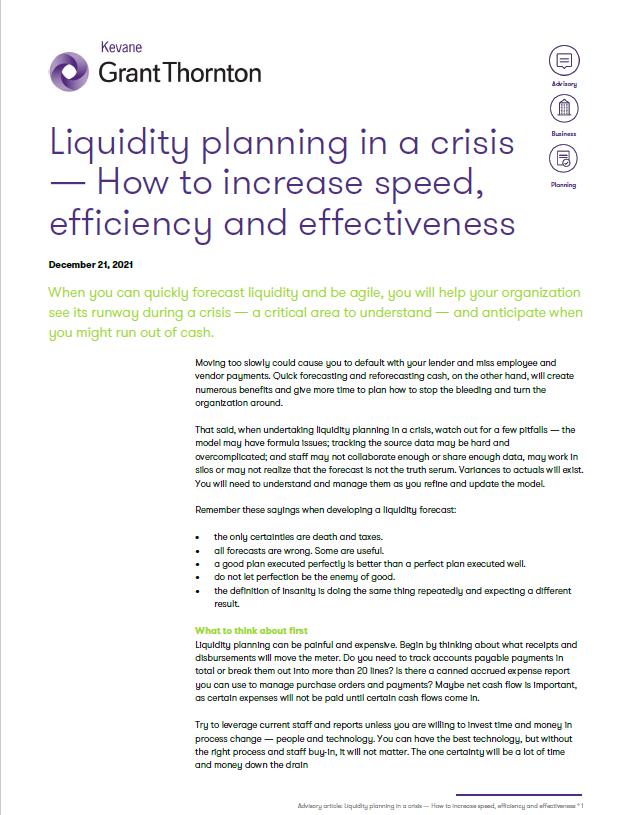-
Financial statements audits
Financial statement audits
-
Compliance audits
Compliance audits
-
Compilations and reviews
Compilations and audit
-
Agreed-upon procedures
Agreed-upon procedures
-
Tax compliance
Business Tax
-
Global mobility services
Through our global organisation of member firms, we support both companies and individuals, providing insightful solutions to minimise the tax burden for both parties.
-
Sales and use tax and indirect taxes
SUT/ VAT & indirect taxes
-
Tax incentives
Navigating the complex landscape of tax incentives in Puerto Rico can be challenging. Whether you're looking to benefit from the Export Services Act (Act 20), the Individual Investors Act (Act 22), or other incentives under Act 60, we provide tailored advice to help you maximize your tax benefits and ensure compliance. Let us help you unlock the potential of doing business in Puerto Rico.
-
Transfer Pricing
The laws surrounding transfer pricing are becoming ever more complex, as tax affairs of multinational companies are facing scrutiny from media, regulators and the public
-
International Business Center
Kevane Grant Thornton is an International Business Center within the Grant Thornton network. Our expert team provides integrated solutions to help Puerto Rico businesses navigate the complex issues that arise when developing global businesses.

-
Business consulting
Our business consulting services can help you improve your operational performance and productivity, adding value throughout your growth life cycle.
-
Business Risk Advisory
Risk is inevitable but manageable. We deliver relevant, timely and practical advices to aid organizations manage risk and improve business performance. We can help you identify, understand and manage potential risks to safeguard your business and comply with regulatory requirements.
-
Technology Advisory
We provide comprehensive solutions to safeguard your business and ensure operational resilience and compliance. Our expert team offers a range of technology advisory services designed to address your cybersecurity needs, enhance business continuity, and manage security effectively.
-
Transactional advisory services
Transactions are significant events in the life of a business – a successful deal that can have a lasting impact on the future shape of the organizations involved. Because the stakes are high for both buyers and sellers, experience, determination and pragmatism are required to bring deals safely through to conclusion.
-
Forensic and investigative services
At Grant Thornton, we have a wealth of knowledge in forensic services and can support you with issues such as dispute resolution, fraud and insurance claims.


Moving too slowly could cause you to default with your lender and miss employee and vendor payments. Quick forecasting and reforecasting cash, on the other hand, will create numerous benefits and give more time to plan how to stop the bleeding and turn the organization around.
That said, when undertaking liquidity planning in a crisis, watch out for a few pitfalls - the model may have formula issues; tracking the source data may be hard and overcomplicated; and staff may not collaborate enough or share enough data, may work in silos or may not realize that the forecast is not the truth serum. Variances to actuals will exist. You will need to understand and manage them as you refine and update the model.
Remember these sayings when developing a liquidity forecast:
- The only certainties are death and taxes.
- All forecasts are wrong. Some are useful.
- A good plan executed perfectly is better than a perfect plan executed well.
- Do not let perfection be the enemy of good.
- The definition of insanity is doing the same thing repeatedly and expecting a different result.
What to think about first
Liquidity planning can be painful and expensive. Begin by thinking about what receipts and disbursements will move the meter. Do you need to track accounts payable payments in total or break them out into more than 20 lines? Is there a canned accrued expense report you can use to manage purchase orders and payments? Maybe net cash flow is important, as certain expenses will not be paid until certain cash flows come in.
Try to leverage current staff and reports unless you are willing to invest time and money in process change - people and technology. You can have the best technology, but without the right process and staff buy-in, it will not matter. The one certainty will be a lot of time and money down the drain.
Putting numbers on a piece of paper will not help your margins, but bringing cash in the door or slowing down or reducing cash out will give you some breathing room to assess your situation, sell a piece of the company or negotiate an increase in your line of credit. Remember, the forecast is a tool to use in conjunction with your current management reporting system. Once you have completed the initial draft, the processes of reviewing, revising, and adjusting the plan will be more rapid and provide important and beneficial information.
What to do
Like any transformation, liquidity planning is a journey, not a sprint. One should step back, evaluate, and continue to learn and improve.
Often, we are brought in to help a client at the request of their lender or shareholders. It is understandable that management may have hundreds of items on their plate, and this is just one, but when a company is cash constrained, cash forecasting is one of the most valuable tools it can have.
Once the people are aligned and processes thought out and documented, the technology can be a simple spreadsheet or multi-million-dollar enterprise resource planning system. You need buy-in from the team doing the work, owning the line items and able to effectuate change. In fact, another certainty is that you will create more paper and reports. If you do not change people and process, you will add an IT tool on top of a poor process, and people will become more overworked and frustrated. Once your people are involved in the process and understand the importance of managing cash in real time, they will adapt their patterns of spending, negotiating terms and avoiding overcommitment to catch up payments to vendors.
Liquidity planning is a process transformation exercise
Like any transformation project, liquidity planning has three pillars - technology, people, and process. Most companies focus only on the first, but the technology tool should be last. The process needs to be broken down to its simplest form for buy-in. Once you have the right people and they understand the process, you can find the best tool to get the job done.
Work toward the goal
All forecasts are just that - forecasts. They will rarely equal actual performance but should be directionally correct. It is better to work with a few lines - total accounts receivable collections, payroll, and total accounts payable disbursements - than to have too much detail, which makes it hard to track actuals.
Start simple. You can always build out more detail as time warrants and as the business management plan evolves. As you track collections and disbursements and dig into customer contracts and pricing, you will see the leakage. Are your biggest customers slow in paying or maybe not even profitable? What are the largest disbursements needed to maintain service levels, space, and headcount?
The goal should be to hold people accountable for what they can control. Do you want to run a cash culture, or are you in a growth or investment mode? You will need to incentivize managers. The direction should come from the top down. Like any process, this one requires an owner, and it should not be the consultants. If a 13-week cash flow is pushed down from the lenders, what is motivating the lenders? Open communication can save management lots of time by preventing guessing games. If you hire consultants to help you, what happens when they leave? Does the company have the capacity, tools, and training to take over?
The next time you are asked or need to create a 13-week cashflow, ask yourself and your team these four questions:
- Where do we want to go?
- What is the plan?
- Who is on the leadership team?
- How do we get the team aligned, provide necessary resources, and give team members a voice in the process to pull off the plan?
Once you answer these four questions, the results of a successful liquidity planning implementation will follow.
Source: Grant Thornton library articles.






